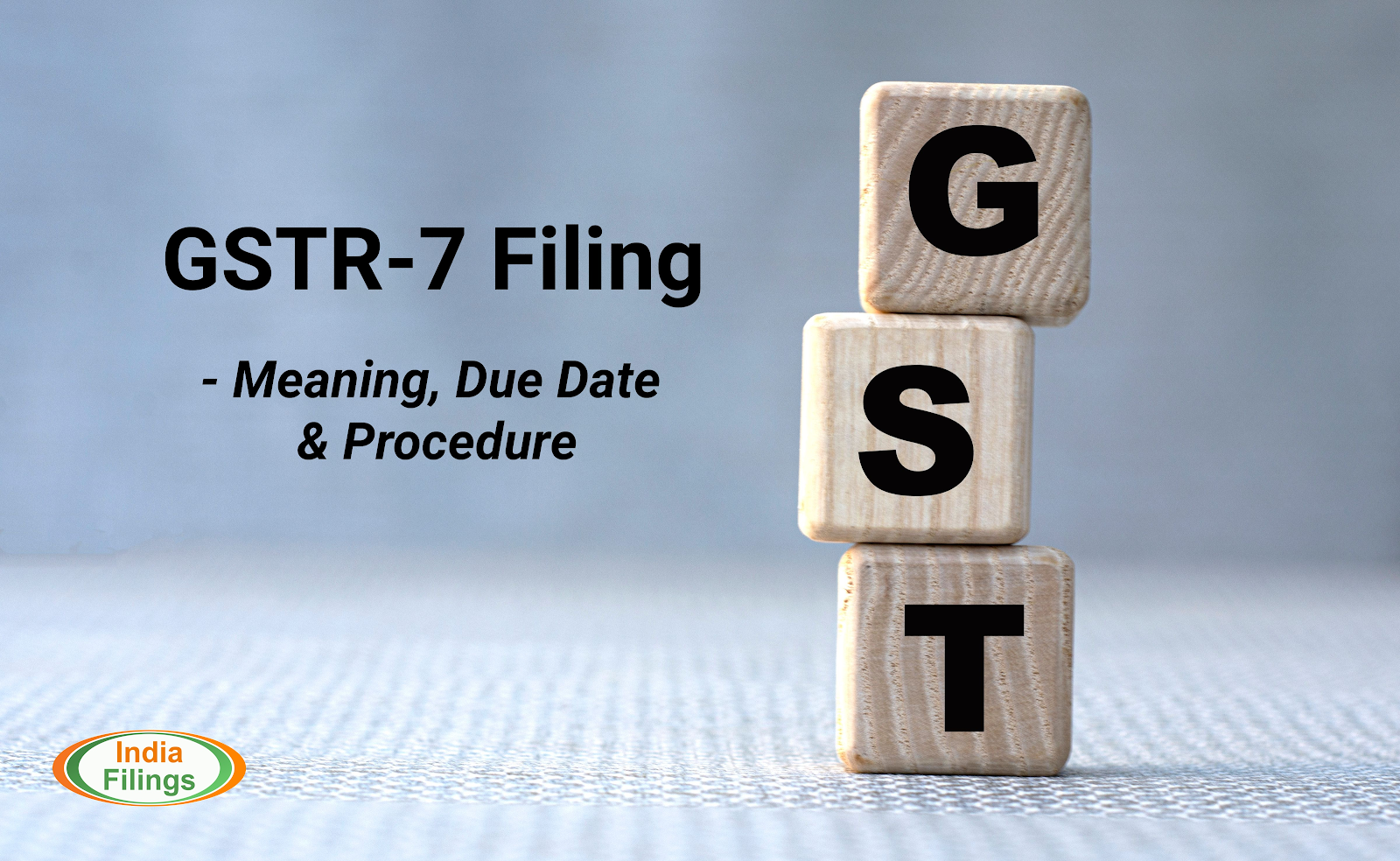🧾 Introduction
The Goods and Services Tax (GST) regime brought significant changes in India’s indirect tax system, including Tax Deducted at Source (TDS) under GST. GSTR-7 is a mandatory return that must be filed by TDS deductors. This blog provides a step-by-step guide to filing GSTR-7, explains eligibility, due dates, penalties, and ensures complete GST TDS compliance for 2025.
📌 What is GSTR-7?
GSTR-7 is a monthly return to be filed by taxpayers who are required to deduct TDS under GST. It contains details of:
-
GSTIN of the deductee
-
TDS deducted
-
TDS paid to the government
-
TDS liability and refund claimed (if any)
🧑💼 Who Needs to File GSTR-7?
As per Section 51 of the CGST Act, the following entities must deduct and file GSTR-7:
-
Government departments
-
Local authorities
-
Public sector undertakings (PSUs)
-
Authorities or boards with more than 51% government control
-
Any notified persons or entities by government
💡 Note: TDS under GST is applicable only if the contract value exceeds ₹2.5 lakh (exclusive of GST).
📅 GSTR-7 Due Date
| Month | Due Date for GSTR-7 |
|---|---|
| Every Month | 10th of the following month |
For example: GSTR-7 for April 2025 must be filed by 10th May 2025.
💡 Pre-Requisites for Filing GSTR-7
-
Valid GSTIN as TDS deductor
-
Access to GST portal
-
Details of TDS deducted and paid
-
Digital Signature Certificate (DSC) or EVC
📝 Step-by-Step Process to File GSTR-7 on GST Portal
Step 1: Login
-
Visit www.gst.gov.in
-
Login using your credentials (username and password)
Step 2: Navigate to GSTR-7
-
Go to: Returns Dashboard → Select Financial Year & Period
-
Choose GSTR-7 (Return for TDS Deductors)
Step 3: Fill in the Details
-
Table 3: Details of deductees
-
GSTIN of the deductee
-
Amount paid to deductee
-
Amount of TDS deducted (IGST/CGST/SGST)
-
-
Table 4: Amend previous months’ TDS details (if required)
Step 4: Preview and Verify
-
Click on ‘Preview’ to download draft return
-
Verify details for any errors
Step 5: Make Payment (If Applicable)
-
If any shortfall in TDS deposited, use Create Challan to pay
Step 6: File Return
-
Use DSC or EVC to authenticate
-
Click on ‘File GSTR-7’
📥 TDS Certificate (Form GSTR-7A)
-
Once GSTR-7 is filed, Form GSTR-7A is generated automatically
-
This acts as the TDS certificate for the deductee
-
Deductee can claim the TDS credit in their electronic cash ledger
⚠️ Late Filing Fees & Penalties
| Type | Penalty/Fee |
|---|---|
| Late Filing Fee | ₹100/day under CGST + ₹100/day under SGST (Max ₹5,000) |
| Interest on Late Payment | 18% per annum on unpaid TDS |
✅ Benefits of Filing GSTR-7 on Time
-
Avoid penalties and interest
-
Maintain government compliance
-
Enable deductees to claim TDS credit
-
Build business reputation with vendors and authorities
🙋 FAQs on GSTR-7
Q.1: Can GSTR-7 be revised?
No, GSTR-7 cannot be revised. However, corrections can be made in the next month’s return using Table 4.
Q.2: Is GSTR-7 required if no TDS is deducted?
Yes, a Nil return must be filed even if no TDS is deducted during the period.
Q.3: Is GSTR-7 applicable to private companies?
Only if they are notified persons or fall under the criteria mentioned under Section 51.
🧾 Conclusion
GSTR-7 filing is a crucial part of TDS compliance under the GST regime. With evolving rules and deadlines, staying updated is essential for government agencies, PSUs, and notified businesses. Timely and accurate GSTR-7 filing not only avoids penalties but also strengthens the financial ecosystem.
For expert assistance in GSTR-7 filing or any GST-related service, feel free to contact Verotus Finlegal Solutions LLP — your trusted compliance partner.
📞 Need Help with GST Compliance?
Connect with our experts at www.verotusllp.com
📍 Location: Kolhapur, Maharashtra
📧 Email: verotusllp@gmail.com
📞 Phone: +91-7066336680


